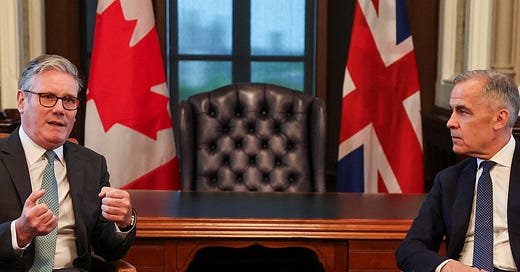The European Union is finalizing bilateral agreements with Canada and the United Kingdom to grant both countries access to its new €150 billion loan facility dedicated to defence production. The initiative, expected to be concluded by the end of July, will allow Canadian and British companies to participate in joint procurements funded by the EU—an unprecedented step for non-member states. The move follows recent partnership frameworks signed with both countries, reflecting the EU’s strategic intent to widen its defence industrial base and reduce critical dependencies, particularly on the United States.
For Canada, the agreement marks a key development in the broader transformation of its defence policy. Prime Minister Mark Carney has committed the country to increase total defence-related spending to 5 percent of GDP by 2035, of which 3.5 percent is earmarked for core military expenditure and 1.5 percent for dual-use and infrastructure investments. Based on current projections, this will require annual outlays of approximately 150 billion Canadian dollars, including over 100 billion for direct military purposes. To ensure that a significant share of this funding remains within national borders, the Canadian government is developing an industrial strategy designed to channel procurement and manufacturing opportunities to domestic firms, with a strong emphasis on integration into European value chains.
The EU-Canada defence accord is part of a wider realignment in transatlantic relations. In parallel to reaffirming its NATO commitments, Canada is actively seeking to diversify its strategic partnerships and procurement sources. The government has announced a review of its planned F-35 acquisition and is in exploratory talks for the purchase of European fighter aircraft and submarines. This industrial diversification aims to mitigate political risk, address capability gaps, and support long-term technological cooperation with European defence companies. Participation in EU-funded projects offers Canadian firms new routes to scale and joint R&D opportunities within a protected continental market.
From the EU’s perspective, the agreements with Canada and the UK represent a step toward a more inclusive, resilient and globally connected defence ecosystem. By granting selected partners access to its defence loan program and co-financed procurements, Brussels is seeking to pool capacities with likeminded democracies while extending its influence over standard-setting and industrial coordination. Canada’s integration into the EU’s defence initiatives also signals the emergence of a dual-track transatlantic framework: one that complements NATO’s military deterrence function with a deeper, more autonomous European defence industrial architecture.




